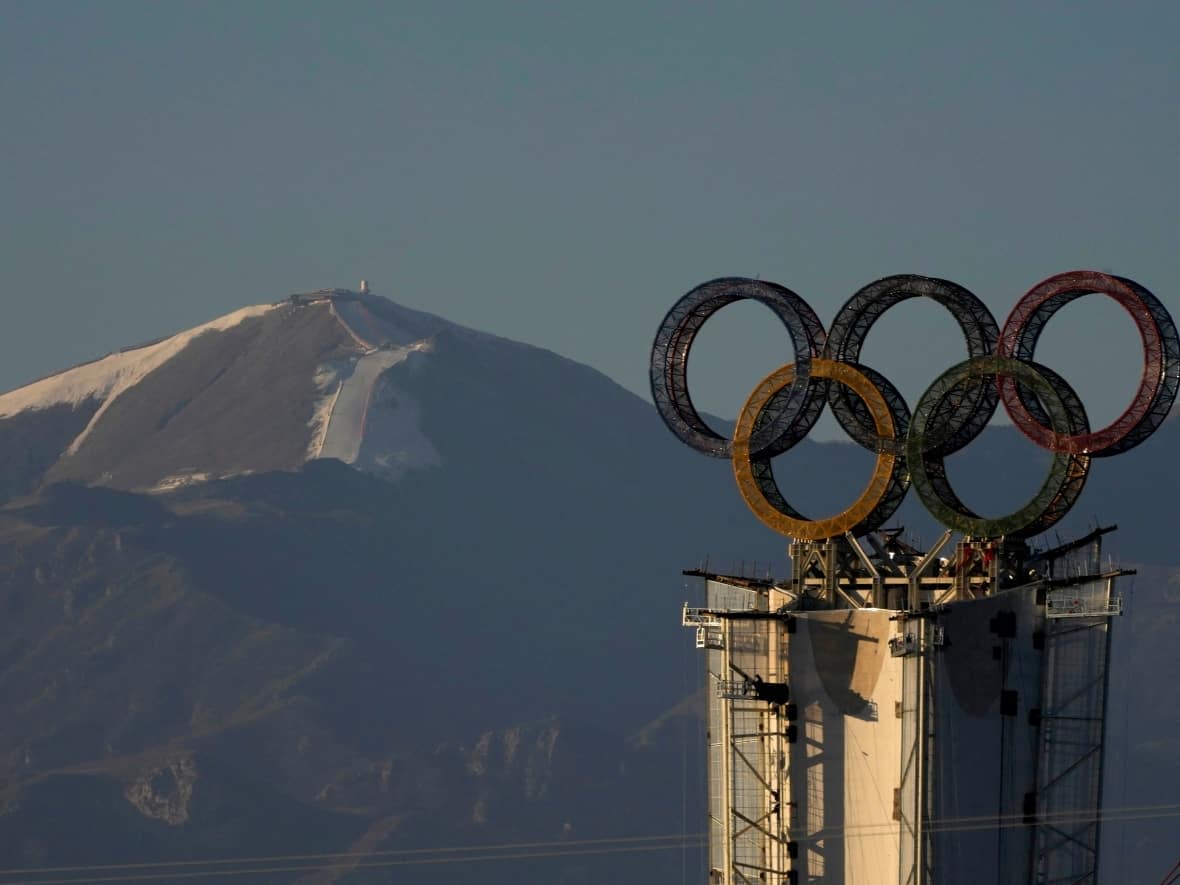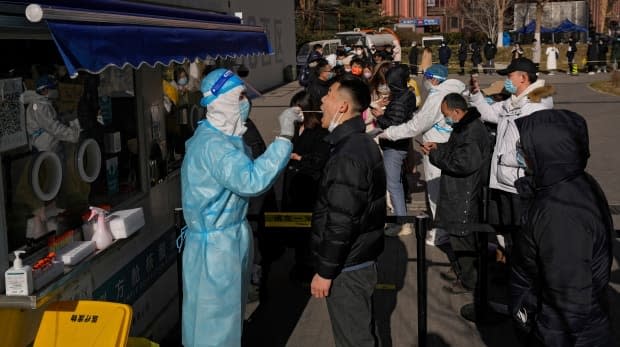Canadian athletes could be affected by Beijing's higher COVID-19 testing threshold

The Beijing Olympic Committee is using stricter than usual testing for COVID-19, making it harder for Canadian athletes, especially those who have recently recovered from the virus, to pass tests upon arriving in China, CBC Sports has learned.
The cycle threshold (CT) value being used in China to detect an infection is 40, Dr. Mike Wilkinson, chief medical officer for the Canadian Olympic Committee, confirmed Monday.
The higher the CT value, the less infectious a person with COVID-19 is.
Many places in Canada use a CT value of 35.
The NBA and NHL use 30. The NFL has set its threshold at 35.
"I think what Beijing is doing is that they're doing everything they can to ensure they don't have positives coming in," Wilkinson said.
But a person who has recently recovered can also test positive — if a PCR test's CT value is set high enough.
When CT values are 30 or greater "we start to think of people as less infectious," said Dr. Isaac Bogoch, an infectious disease specialist. "Is it perfect? No, but it's pretty good."
He says the high threshold being used for Beijing "basically means that anyone with a recent infection has a not-insignificant chance of testing positive in China, even if they've had several negative tests in Canada."
"It sounds like they're treating positive PCRs as positive PCRs and not acknowledging the protective benefit that someone who is recently recovered would have," Bogoch said.
Dozens of Canadian Olympians have tested positive over the last few weeks: the bobsleigh and short track speed skating teams had outbreaks. The women's hockey team have also had a high number of cases.
Figure skating duo Vanessa James and Eric Radford tested positive over Christmas, and a number of Canada's long track speed skaters have recovered recently from the virus.

Any Games participants, should they recover from COVID-19 30 days or less before departure, must produce three negative PCR tests. Those are then submitted to the Beijing Olympic Committee. Should the participant be approved, two more pre-departure tests, 96 and 72 hours before the flight to Beijing, have to be produced.
Then there's one final hoop — passing a PCR test at the airport. Should someone test positive and be asymptomatic, they are held in isolation at a hotel nearby.
Two more negative tests are then required to be released into the "closed loop" system to take part in the Olympics.
Negative at home, positive in Beijing?
There have already been cases of people passing PCR tests in their countries and failing another upon arriving in Beijing.
"If someone had a recent infection, has clear evidence of that and is not transmissible, I would not be concerned with a residual PCR test," Bogoch said.
"It doesn't make sense to test someone in that circumstance or at the very least make an important decision given the circumstance."
There is a plan in place, according to the IOC, should an athlete who has tested positive and since recovered test positive again in China.
A medical expert panel has been made up of 20 members, including representation from the China Centre for Disease Control, the Beijing CDC, and five international representatives of the IOC, the International Paralympic Committee and Winter International Federations.
The panel will deal with each case individually. Wilkinson says it is already operating but he has yet to submit documents for any Canadian athlete.
He's preparing for it though.
"It's something we flagged a long time ago as being a source of stress for athletes. Every time you go for a test you have this doubt and anxiety," Wilkinson said.
IOC remains confident
The IOC says it's confident in its protocols.
"We draw on the experiences from other international sports events, including the successful Tokyo 2020 Games, and the COVID-19 policy currently in effect in China," it said in a statement.
Team Canada has lined up a number of charter flights to get athletes and support staff to Beijing. The first flight is scheduled to depart on Jan. 26.
"We're doing everything we can to ensure they get to Beijing. We are working on all the angles to ensure that if they have a false positive or persistent shedding that they get to Beijing. The concern is if you get a new infection within a few days of departing. That's a different story," Wilkinson said.
"That's why we're telling everyone to be extremely careful in the two weeks prior to leaving. One of the benefits of a charter is that we're in control of the seating plan. So we know what a close contact definition is and how many seats need to be between people."
A close contact is anyone seated two rows ahead or behind the person who tested positive.
"Everyone wants to compete. I get it," Bogoch said.
The opening ceremony of the 2022 Winter Olympics is slated for Feb. 4.

 Yahoo Movies
Yahoo Movies 
